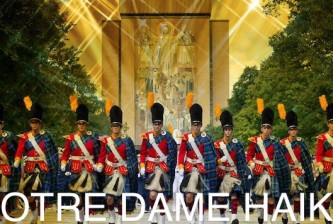With Brian Kelly clearing Tommy Rees to participate in summer workouts, the debate whether he should be Notre Dame's starting quarterback will continue well into fall camp. Rather than debating whether Rees should be the starting quarterback, I decided to breakdown some game tapeYouTube clips and write a two-part evaluation of his ability to read defenses. Part I will focus on his pre-snap decisions, and Part II will focus on his post-snap decisions.
The importance of the pre-snap read
A proper pre-snap read is the first step in successfully executing a play. The quarterback must identify potential coverages so he can determine where to start his route progression after the snap. Identifying the coverage simplifies the quarterback's post-snap reads and often times allows him to read a single defender during the play. In other words, a proper pre-snap read increases a play's chance of success.
A proper pre-snap read also allows the quarterback to check out of a bad play. For example, if the quarterback sees that the defense has eight or nine defenders in the box, he might check out of a run play and take advantage of single coverage on the outside receivers. Conversely, if the defense only has five defenders in the box, the quarterback might check out of a pass play and take advantage of the numbers in the run game.
Tommy Rees and the pre-snap read
Like most coaches, Brian Kelly gives his quarterbacks a fair amount of discretion to check into and out of plays based on an initial pre-snap read. One of Rees' perceived advantages over the other quarterbacks on the roster is his ability to read defenses prior to the snap and check into the right play. Let's take a look at Rees in action.
The first play comes from this year's Blue-Gold game. It's a good example of how a quarterback can influence the run game without using his feet.
The offense lines up in three-wide formation with twin receivers to the top of the screen. The defense is in a base 3-4 with the corners playing loose and the inside linebackers shaded to the wide side of the field. Before the snap, Rees recognizes Danny Spond's potential weakside blitz.
Rees audibles to a shotgun formation and calls a zone read away from Spond's potential blitz.
Spond's movement dictates whether Rees will keep the ball or give it to the running back. Once he recognizes that Spond is staying home to cover the backside keeper, Rees hands off to George Atkinson. Atkinson takes the hand-off and sweeps toward the strength of the formation.
The line does a nice job sealing the edge, and Spond cannot catch Atkinson from the backside. Atkinson gets to the edge and gains 10 yards. Rees won't get any credit in the stat book, but you can bet the coaches noticed this play.
The next play comes from last year's USC game. This play illustrates how Rees' lack of urgency during his pre-snap reads and audibles gives the defense time to counter with an audible or simply show him a false look.
As Notre Dame's offense lines up, USC shows a corner blitz from the short side of the field. The corner shifts into the box while the safety slides over to cover Michael Floyd.
At approximately the 4:40 mark, Rees recognizes the potential corner blitz and starts changing the play.
Meanwhile, the Trojan linebackers appear to be looking toward the sideline for a new play from their coaches. Notice how the cornerback has retreated to his original position.
After Cierre Wood shifts to Rees' right, the Irish are finally set for the snap. Rees took nearly 10 seconds to change the play after making his initial pre-snap read.
Rees audibles into a roll-out pass away from the potential corner blitz, but the blitz never comes. Seven defenders drop into coverage, and the Trojans' four-man rush beats six Irish blockers. The coverage forces Rees to throw the ball into the stands. Although throwing the ball away was the right decision, his poor pre-snap read put the offense in a position to fail.
As a sidenote, I would have liked to see Rees check into a "look" or "smoke" pass in that situation. The Irish had three receivers to the top of the screen against only two defenders. A simple swing to a receiver is low risk and would have given the Irish a numbers advantage on the outside. Weis' offenses made a living exploiting defenses with the "look" play, and I would like to see Kelly utilize it more often.
Improving Rees' pre-snap reads by increasing the tempo
If Rees is the starting quarterback next season, I would like to see him get the offense in and out of plays with more urgency. I don't expect the offense to look like the Oregon Ducks, but the advantages of increasing offensive tempo have been well-documented. As Chris Brown of Smart Football recently noted:
Modern defenses want to match offenses in terms of strength and speed via personnel substitutions. They also want to confuse offenses with movement and disguise. The up-tempo no-huddle stymies those defensive options. The defense doesn't have time to substitute, and it’s also forced to show its hand: It can't disguise or shift because the quarterback can snap the ball and take advantage of some obvious, structural weakness. And when the defense is forced to reveal itself,Tom Brady can change into a better play. The upshot of this tactic: Brady, of all people, sees defenses that are simpler than those most other NFL quarterbacks go up against.
With an increased tempo simplifying defenses, perhaps Rees can improve the accuracy of his pre-snap reads and minimize his poor post-snap decision making.
Stay tuned for Part II.

































